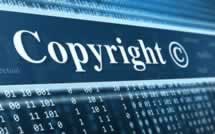Report answers the question ‘Who owns teacher-created digital content?’
Schools and districts are increasingly urging teachers to use digital content for instruction, with many teachers taking innovative steps by creating their own digital content. But when it comes to copyright, ownership, and sharing, that’s where it gets tricky.
“In the era of digital publishing, which includes teacher-created, -refined, and –remixed materials, an important question has arisen: who owns this digital content?” asks a policy brief from the State Educational Technology Directors Association [1] (SETDA), titled “Clarifying ownership of teacher-created digital content empowers educators to personalize education, address individual student needs [2].”
According to the brief, the confusion over who owns teacher-created content is due to three main reasons: 1) Lack of clarification in terms, 2) vague wording in The Copyright Act of 1976 [3], and 3) Lack of specifications outlined by state and district leaders (including the state educational agency, state board of education, legislature, and/or governor).
(Next page: 3 must-knows about teacher copyright)
1. Know the concepts.
Before any policy can be enacted, it’s important all parties know two key definitions when discussing issues of teacher-created digital content: copyright and license.
The brief defines copyright as ownership of intellectual property. A copyrighted work is any form of expression that reflects at least minimal creativity on the part of the author, including text, images, lesson plans, et cetera. Copyright controls how the intellectual property can be used and distributed. It’s also attached automatically when the work is created, and copyright is granted to ‘the author’ of that work.
License refers to permission for others to use or to share the intellectual property (without the copyright owner relinquishing its ownership).
Copyright awareness for superintendents and administrators:
[field name=iframe2]
2. Know what the law says…and doesn’t say.
Before The Copyright Act of 1976, copyright was automatically granted to the teacher creating educational materials during their employment. This action was an exception to the “work made for hire” rule that typically allocated ownership for work prepared during employment to the employer.
However, as the brief explains, neither the language nor the legislative history of the Copyright Act of 1976 mentions the “teacher exception,” or any other exception to the “work for hire” rule. Therefore, “it is unclear whether Congress intended to leave this judicially created right intact,” notes the brief.
SETDA states that judicial opinions go both ways, with the crux of the difference in opinion turning on whether the Copyright Act should be interpreted literally or in light of its history and purpose. However, academic publishers and university copyright policies treat teachers as the authors of the teaching materials and scholarship they produce.
Other legal considerations outside of the Copyright Act should also be considered, says the brief, since state laws may differ regarding the identity of a teacher’s employer; it could be the state, a school district, or some combination. Also, educators may be developing digital materials pursuant to federal, state, or privately funded grants that establish their own intellectual property obligations.
(Next page: Must-know #3; recommendations)
3. Know your policy options.
“Uncertainty about teachers’ ownership of the materials they develop at work and an absence of digital-era state and district policies about the use of state- and district-owned materials represents a potential hindrance on innovation,” says the brief.
Therefore, state and district policymakers should establish clear policies. Policymakers have options when creating copyright rules, including:
- If the policy is designed to have the teacher be the author of the educational resources she creates, take the position that the teacher is the author under the teacher exception and enter into a written agreement with the teacher If a state or district takes this approach, the state or district could also require that the teacher grant it a license to use, and to authorize others to use, the materials.
- Alternatively, if a state or district takes the position that educator-created materials are works made for hire, it can grant licenses to educators in their own works so that they can use, share, redistribute, and refine educator-created materials. In other words, the employer retains the copyright but provides the creator of the content and others with a license so that reuse, revision, and redistribution rights are defined upfront.
- States and districts can choose to license other state- and district-owned content, where the state or district owns the copyright in that work (such as teacher training materials), as open educational resources (OERs).
For more on the discussion on who owns teacher-created digital content, including licensing options under Creative Commons and 7 recommendations from SETDA on how states can introduce policies on copyright, read the full brief [2].
